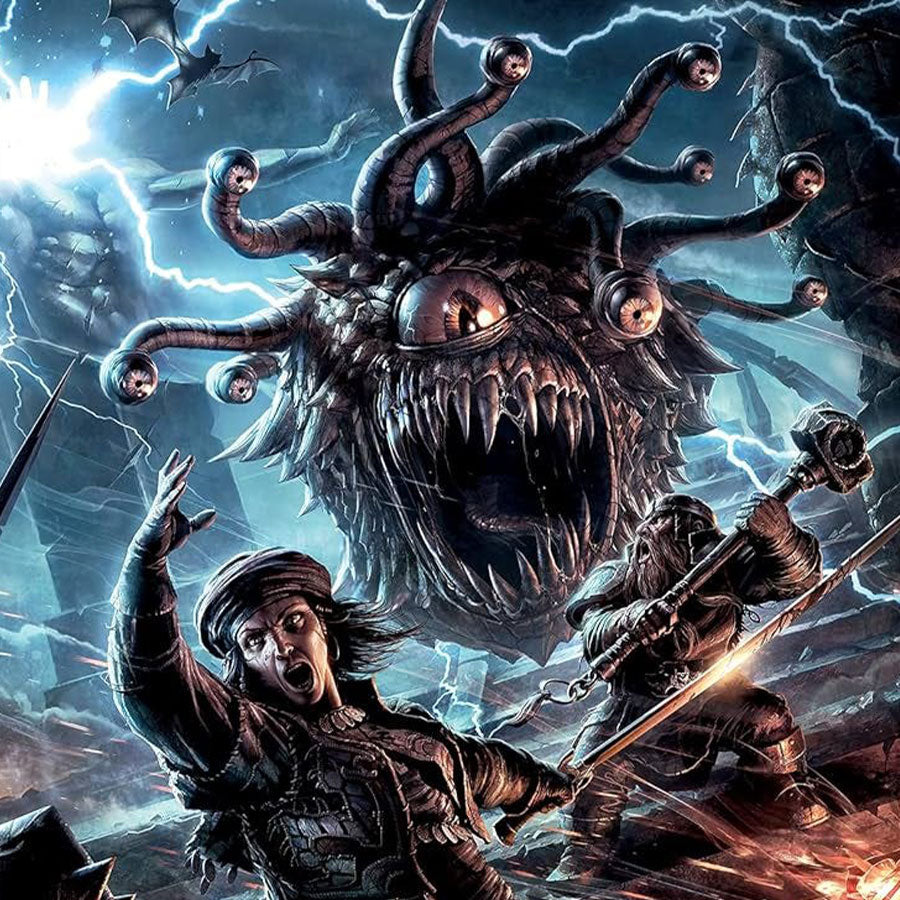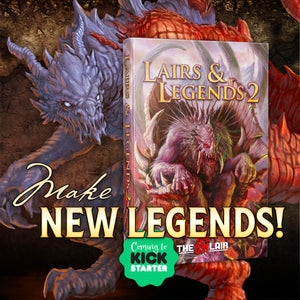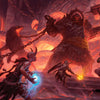The Truth About Beholders | D&D Lore

Written by Luke Hart
You’ve been lied to.
You’ve been told beholders are just monsters—big floating balls with too many eyes and too many lasers. That they live in dungeons, shoot some rays, and die when the barbarian rolls a crit.
But that’s not the truth.
The truth is, beholders are some of the most alien, dangerous, and obsessively paranoid creatures in all of Dungeons & Dragons. They don’t just fight you—they outthink you. They don’t just live in lairs—they design death-traps that reflect their fractured minds. And they definitely don’t like each other.
Today, we’re pulling back the curtain on one of D&D’s oldest and most bizarre monsters. Where they came from. How they think. What makes them so terrifying—and how to use that to make your players sweat.
This isn’t just a lore deep dive. This is the truth about beholders.
And it starts with where they came from.
ORIGINS: A D&D ORIGINAL
Beholders, eye tyrants, or spheres of many eyes, didn’t come from folklore. They weren’t stolen from Tolkien. They’re pure Dungeons & Dragons—one of the first monsters original to the game.
They made their debut in the original Greyhawk supplement and even graced the cover. That first version was illustrated by Greg Bell, a 14-year-old friend of Gary Gygax. And since then, nearly every major D&D artist has taken a turn drawing them, from terrifying to downright goofy.
In those early days, beholders were presented with little lore. They lived underground, attacked on sight, and could be bribed if you were lucky. Originally neutral with chaotic leanings, they were later reclassified as Lawful Evil in the AD&D Monster Manual.
Still, for a long time, a beholder was just a floating death-orb. There was no history, no origin—just eye beams and attitude.
That all started to change with the arrival of Dragon Magazine and a little article called The Ecology of the Beholder.
BUILDING THE LORE: FROM FLOATING BALLOONS TO COSMIC TYRANTS
Early on, beholders were more floating hazard than fully fleshed-out villain. That started to shift with Dragon Magazine #76, which gave us The Ecology of the Beholder by Ed Greenwood and Roger E. Moore. This was the first serious attempt to explain how these things actually worked. According to the article, beholders levitate thanks to a magical organ in their brain called the levator magnus, and they prefer living underground because they couldn’t push their bodies against high winds.
We also learned they’re omnivores—aggressively so—and reproduce once a year by vomiting up to four eggs from their mouths. It was gross. It was weird. And aside from a little about their diet and combat instincts, that was about it.
The second volume of the AD&D Dungeon Master’s Companion finally made beholders look dangerous—no more balloon with teeth—and that artwork carried over to the 2nd Edition Monstrous Compendium cover. Though, unfortunately, the interior art went right back to looking like a confused parade float. Lore-wise, 2nd edition still kept things light, but it did start to define beholders’ paranoia and xenophobia as innate traits. It also contradicted the whole “egg vomiting” thing and said they were probably parthenogenic, cloning themselves into perfect copies.
But the real shift came with two words: Spelljammer and I, Tyrant.
In Spelljammer, beholders—and the illithids—were reimagined as ancient, spacefaring species originating somewhere deep in Wildspace. Each beholder believed it alone was the pinnacle of their species and civilization. They built ships, sailed the void, and declared war on each other just for existing.
Then came I, Tyrant, which expanded the lore like never before. It introduced the idea of a beholder city in the Underdark and elevated the Hive Mother—originally just a stat block—into a true power player. These monstrous matriarchs subjugated other beholders and ruled with absolute psychic dominance. It was bureaucratic nightmare meets horror cult—and it changed how DMs used beholders forever.
MODERN LORE: NIGHTMARES, BRAINS, AND THE GREAT MOTHER
3rd edition started off pretty sparse when it came to beholder lore. The Monster Manual gave us the basics and slapped on a “usually Lawful Evil” tag—but that was about it. For a creature that shoots death from ten eyeballs, it was weirdly underdeveloped.
But then Lords of Madness came out in 3.5—and everything changed.
This book was a full-blown love letter to aberrations, and beholders got their due. We learned about their dual brains, their dietary habits, and how their young have horrifyingly low survival rates—because most of them get disintegrated by their parent for being imperfect.
Lords of Madness also gave us their true origin story: the beholders were spawned on one of the Outer Planes by an unnamed, reality-warping entity known only as the Great Mother. She’s not a goddess—they don’t need gods. She’s a primal being, and they revere her while ignoring every other beholder that’s come since. Because of course they do.
Their society? Barely a society at all. Most beholders are too xenophobic and hostile to tolerate each other for more than a few seconds. But the book does allow for rare exceptions—insanely rare sane beholders, who might form cults or hive-like communities similar to the ones from I, Tyrant. Most, though, are just monomaniacal nightmares with delusions of grandeur and enough brainpower to back it up.
Then came 4th edition, which largely coasted on the lore from earlier editions. The Monster Manual gave us a clean presentation, some mechanics, and basically said, “You know what these guys are by now.”
And then 5th edition cracked the weird wide open.
The Monster Manual kept things traditional, but Volo’s Guide to Monsters leaned into the strange, surreal side of beholders—and introduced a terrifying concept: beholders are literally born from dreams.
Here’s how it works: when a beholder sleeps—which is rare—its mind stays fully active, often dreaming of itself or imagined variations. And if the dream is vivid enough? Reality warps and spits out a brand-new, fully formed beholder.
No eggs. No mating. No Great Mother required. Just one meatball’s warped ego reshaping reality.
Volo’s also dives deep into their psychology—highlighting their inhuman intellect, need for control, and obsessive paranoia. It gives guidance for how to roleplay them, how they fight, and even includes variant eye beams to keep players guessing.
In short: 5e took all the best parts of beholders—from Lords of Madness, Spelljammer, and I, Tyrant—and rolled them into the definitive version of the monster: an arrogant, reality-shaping tyrant born from its own mind and convinced it is perfection incarnate.
However, when sixth edition comes out—and you know it will, if it hasn’t already—my money is on them change lore YET AGAIN. Because, hey, why not, right?
PSYCHOLOGY: PARANOIA, PERFECTION, AND DISINTEGRATION
At their core, beholders are defined by three things: xenophobia, arrogance, and control.
They believe themselves to be perfect. Not in a general sense. In a specific, terrifying way. A beholder thinks that its body—its exact arrangement of eyestalks, teeth, skin texture—is the pinnacle of evolution. All other beholders are hideous mutations that must be purged.
They are isolationist. They are egomaniacs. They don’t form societies—unless they’re part of a hive ruled by a mother they can’t challenge. Even then, that unity is temporary.
They’re also genius-level intelligent, often bordering on madness. Some form cults. Some write manifestos. Some build lairs that are masterpieces of arcane engineering and psychological warfare.
And through it all, they believe one thing above all else:
I see everything. I control everything. And I will not be threatened.
FIGHTING A BEHOLDER: WHAT DMs NEED TO KNOW
Let’s be real—beholders are boss monsters. They are the kind of monster you build an entire adventure around.
Combat with a beholder is unique because it’s not just about hit points and AC. It’s about positioning, terrain, and eye rays.
A smart beholder floats above melee range, uses its central eye to shut down magic, and peppers the party with randomized beams—paralysis, fear, disintegration, charm. They’re unpredictable, overwhelming, and absolutely terrifying when used well.
But there’s a catch: beholders are arrogant. Use that.
A clever party can goad one into overextending, split its attention, or exploit its need for control. And if you want to make things even more intense, modify the lair. Beholders build their homes with anti-magic zones, traps, floating platforms, and terrain that gives them the edge.
Used right, a beholder isn’t just a monster—it’s an event.
WHICH VERSION DO I USE?
I really enjoy the 3rd edition lore. The cult of the Great Mother, the isolationist paranoia, the sheer religious zealotry of it.
Also, there’s something deeply compelling about a monster that doesn’t just want to kill you—it thinks you deserve to die because you’re imperfect.
That said, I think 5e’s “dream-born” version is genius in its own way. It taps into something more surreal. More alien. A being that creates reality from its thoughts is deeply D&D—and it gives you some wild narrative options for spawning new beholders mid-campaign.
But if I have to run one at my table? It’s the zealot. The tyrant. The eye that watches and judges. That’s the beholder I want.
The Ultimate D&D 5e Resource Anthology
Even as a veteran dungeon master, I'm often overwhelmed with everything I need to do to prep for a game. And I suspect others might feel the same way. That's exactly why my team and I created Lairs & Legends 2 and Loot & Lore 2.
If you’re looking for loads of 5e adventures that you can prep in under 30 minutes or elements such as traps, puzzles, and encounters that you can drag and drop into your game at a moment’s notice, we have you covered!
With Lairs & Legends 2 and Loot & Lore 2, you’ll get over 700 pages of D&D 5e resources:
- 33 Adventures
- 100+ Monsters
- Encounters
- Traps
- Puzzles
- and more!
Everything is designed to be EASY TO USE and QUICK TO PREP for your game. Our goal is to make game masters’ lives easier, not more complex!
Don’t spend another moment frustrated and overwhelmed as a GM. Pick up the Lairs & Legends 2 and Loot & Lore 2 today and find out how much easier being a GM can be!
-
Posted in
Game Master How-To Articles







